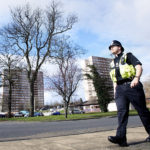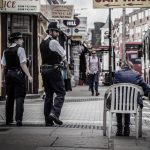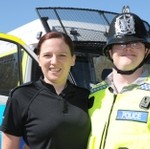
Kam Bhui reviews a conceptual framework developed to understand structural racism and suicide prevention for ethnoracially minoritised youth in the United States.
[read the full story...]
Kam Bhui reviews a conceptual framework developed to understand structural racism and suicide prevention for ethnoracially minoritised youth in the United States.
[read the full story...]
Amelia Talbot summarises a new qualitative systematic review exploring first responders’ experiences of providing support to people during a mental health crisis.
[read the full story...]
Ian Cummins explores a qualitative study which finds that police officers are ambiguous about their involvement in mental health emergencies.
[read the full story...]
Ian Cummins on a systematic review of mental health training programmes for non-mental health trained professionals coming into contact with people with mental ill health.
[read the full story...]
Vishal Bhavsar appraises a descriptive study of Street Triage and detentions under Section 136 Mental Health Act in the North-East of England.
[read the full story...]
Alastair Canaway reviews a new study that maps and costs pathways through mental health and police services, and models the cost impact of implementing key policy recommendations.
[read the full story...]
Background Last week we posted about the recent multi agency inspection of responses to people with learning disabilities in the criminal justice system which suggested that information was poorly shared and that significant improvements were possible. The researchers in this study worked in a large London metropolitan police station and were interested in looking at [read the full story…]

Background Anti-social behaviour is a key issue of public concern with significant numbers of people reporting behaviours such as vandalism, graffiti and litter as problems in their local area. The Crime and Disorder Act (1998) defines anti-social behaviour as ‘Acting in a manner that caused or was likely to cause harassment, alarm or distress to [read the full story…]

The British Crime Survey suggests that 9 out of ten disabled people have been the victims of disability hate crime, but Mencap’s Don’t Stand By report suggested that only around 3% of incidents are recorded by the police as hate crimes with only 1% leading to convictions. The researchers in this three-year project set out [read the full story…]

Disability Hate Crime refers to crimes targeted at anybody as a result of his or her disability or impairment, as defined by the Equality Act 2010 and can take many forms, including ate crime can take many forms including: physical attacks, threats of attack or verbal abuse, insults or harassment. The association of Chief Police [read the full story…]